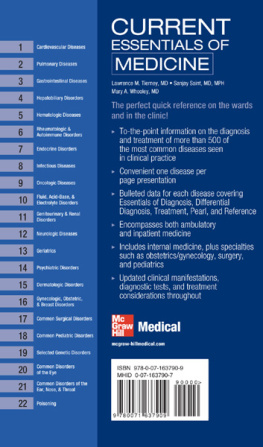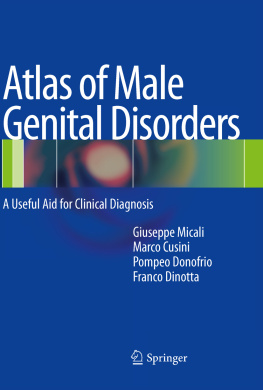Springer International Publishing Switzerland 2016
Donna L. Gruol , Noriyuki Koibuchi , Mario Manto , Marco Molinari , Jeremy D. Schmahmann and Ying Shen (eds.) Essentials of Cerebellum and Cerebellar Disorders 10.1007/978-3-319-24551-5_1
1. Introduction
Donna L. Gruol 1 , Marco Molinari 5, Jeremy D. Schmahmann 6 and Ying Shen 7
(1)
Molecular and Cellular Neuroscience Department, The Scripps Research Institute, La Jolla, CA, USA
(2)
Department of Integrative Physiology, Gunma University Graduate School of Medicine, Maebashi, Gunma, Japan
(3)
FNRS, ULB-Erasme, 808 Route de Lennik, 1070, Bruxelles, Belgium
(4)
Service des Neurosciences, Universit de Mons, 7000, Mons, Belgium
(5)
Clinical Translational Research, Santa Lucia Foundation, Rome, Italy
(6)
Ataxia Unit, Cognitive Behavioral Neurology Unit, Laboratory for Neuroanatomy and Cerebellar Neurobiology, Department of Neurology, Massachusetts General Hospital, Harvard Medical School, Boston, MA, USA
(7)
Department of Neurobiology, Zhejiang University School of Medicine, Hangzhou, 310058, Peoples Republic of China
Mario Manto (Corresponding author)
Email:
Abstract
The depth and breadth of knowledge regarding cerebellar functions in health and disease continue to grow exponentially. Most of the currently available books dealing with the cerebellum and its disorders are highly specialized, usually written for neurologists with a particular interest in the cerebellar disorders. The four-volume Handbook of the Cerebellum and Cerebellar Disorders (Springer 2013) is the most comprehensive monograph on the cerebellum published to date covering both fundamental and clinical aspects. As valuable a resource as this has proven to be, however, the treatise is too extensive for students, and not practical as a brief, authoritative overview of the subject. The editors therefore concluded that there is a compelling need to distill the vast amount of basic science and clinical information in the four-volume text into a clear and concise prcis of the work accessible to clinicians and students. Hence, this work, Essentials of the Handbook of the Cerebellum and Cerebellar Disorders.
Keywords
Essentials Cerebellum Cerebellar disorders Ataxia Students
The depth and breadth of knowledge regarding cerebellar functions in health and disease continue to grow exponentially. Most of the currently available books dealing with the cerebellum and its disorders are highly specialized, usually written for neurologists with a particular interest in the cerebellar disorders. The four-volume Handbook of the Cerebellum and Cerebellar Disorders (Springer 2013) is the most comprehensive monograph on the cerebellum published to date on fundamental and clinical aspects. As valuable a resource as this has proven to be, however, the treatise is too extensive for students, and not practical as a brief, authoritative overview of the subject. The editors therefore concluded that there is a compelling need to distill the vast amount of basic science and clinical information in the four-volume text into a clear and concise prcis of the work accessible to clinicians and students. Hence, this work, Essentials of the Handbook of the Cerebellum and Cerebellar Disorders.
The editors of Essentials have selected what we believe to be major topics with direct scientific and clinical implications for understanding cerebellar anatomy, physiology, clinical neurology, and management of cerebellar disorders. With this monograph, we hope to foster a deeper understanding of the most important aspects of the complex phenomena that characterize cerebellar neurology. In so doing, we hope to encourage students to further explore its many facets, ranging from ataxiology (the study of cerebellar motor disorders) to the cognitive neuroscience of the cerebellum and its connections.
The pocket format of the book makes it readily available for consultation. The chapters are arranged in eleven sections covering fundamental, translational and clinical aspects of the cerebellum and cerebellar disorders. The length of each chapter is approximately four printed pages, enabling the reader to review the necessary information rapidly and efficiently. Critical references provided at the end of each chapter can be consulted for more in-depth information.
The editors are grateful for the outstanding contributions to this work by the renowned international panel of experts in some of the premier clinical centers, universities, and research centers in the USA, Europe, and Asia. We hope that this concise volume achieves its purpose of stimulating students, trainees, and practitioners to enhance their knowledge of the cerebellum and its disorders, and promote further clinical and scientific exploration in the field.
Part I
Brief Historical Note
Springer International Publishing Switzerland 2016
Donna L. Gruol , Noriyuki Koibuchi , Mario Manto , Marco Molinari , Jeremy D. Schmahmann and Ying Shen (eds.) Essentials of Cerebellum and Cerebellar Disorders 10.1007/978-3-319-24551-5_2
2. A Brief History of the Cerebellum
Jeremy D. Schmahmann 1
(1)
Ataxia Unit, Cognitive Behavioral Neurology Unit, Laboratory for Neuroanatomy and Cerebellar Neurobiology, Department of Neurology, Massachusetts General Hospital, Harvard Medical School, Boston, MA, USA
Jeremy D. Schmahmann
Email:
Abstract
Cerebellar structure and function have intrigued investigators and clinicians for millennia. Major anatomic features were recognized early, and the role of the cerebellum in coordinating movements was established two centuries ago. Cerebellar involvement in nonmotor functions was described in clinical and experimental observations starting around the same time, but attention to their importance rose to the fore only recently. Functional localization was first derived from comparative morphology. Ablation degeneration and physiological studies in animals and neurological observations in patients with focal injury led to the lobular theory of organization. This was refined by delineation of the mediolateral parasagittal zonal organization of cerebellar connections. Histological studies date back to Cajal, with descriptions of additional neuronal elements and circuitry evolving over the years. Recognition of the cerebellar cognitive affective syndrome and the neuropsychiatry of the cerebellum, observations from connectional neuroanatomy, and advances in anatomic, task-based, and functional connectivity magnetic resonance neuroimaging provide contemporary support for the earliest notions that cerebellum is engaged in a wide range of neurological functions. Together with new theories of cerebellar function, and elucidation of the genetic basis of inherited or sporadic ataxias and neurobehavioral disorders, the cerebellum has become increasingly relevant to contemporary clinical neurology and neuropsychiatry.
Keywords
Historical background Cerebellum Ataxia Dysmetria Cognition Vestibular
The cerebellum has been recognized since antiquity. Notions regarding its functions included the belief that it imparted strength to the motor nerves (Galen A.D. 129/130200/201), was a center for memory (Nemesius, c.A.D. 390, and Albert von Bollstdt/Albertus Magnus, 11931280), controlled sensory functions including unconscious sensibility (Co(n)stanzo Varolio/Variolus, 15431575), was involved with involuntary activity including the functions of the heart and respiration (Thomas Willis, 16211675), and was the seat of amative love (Franz Joseph Gall, 17581828) (Citations in Neuburger, ). As is apparent from the historical account below, the conclusions of these pioneers, although based on flimsy or fanciful evidence, were actually rather prescient.












